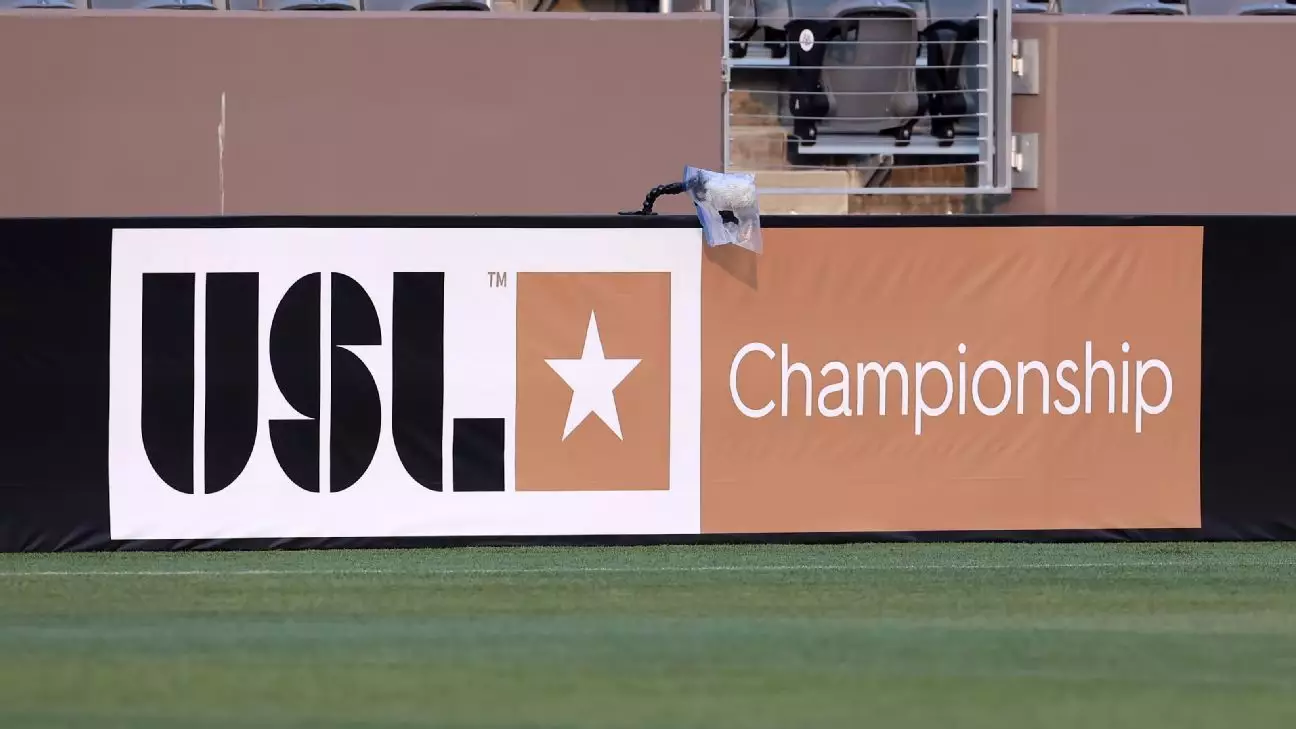The landscape of American soccer is poised for a revolutionary shift with the United Soccer League (USL) announcing its ambitious plans to establish a Division One men’s professional league by 2027. This new tier aims to compete directly with Major League Soccer (MLS), sparking discussions about the future of soccer in the United States. By examining the implications of this initiative, we can gauge how it may transform soccer culture, impact player development, and create vibrant opportunities within communities.
The Rationale Behind the New Division One League
The announcement by USL has been heralded by its CEO, Alec Papadakis, as a watershed moment for soccer’s progress in the nation. By establishing a Division One league, the USL intends not just to enhance competition but also to build a stronger connection with local communities. This grassroots approach underscores a critical understanding; soccer’s growth in the U.S. hinges on embedding itself within various locales rather than merely serving as a top-down organization.
Papadakis’s assertion that “Today is a defining moment for the USL” emphasizes the league’s dedication to carving its niche within the American soccer hierarchy. The ambition to create a sustainable soccer ecosystem while encouraging inclusivity for cities of different sizes represents a paradigm shift that pivots away from the MLS’s centralized model.
Currently, the USL oversees two levels beneath Division One: the USL Championship and USL League One. The establishment of a higher tier paves the way for a more structured development pipeline that promotes player progression while creating multiple avenues for club success. This tiered approach not only redefines the existing framework but also positions USL to take advantage of a promotion and relegation system that is characteristic of leagues in Europe and elsewhere.
Unlike MLS, which maintains a static league structure, the USL is committed to integrating a model that encourages competitiveness and continuous improvement. The potential for clubs to ascend through the ranks fosters an environment where performance is directly linked to opportunity. This kind of dynamism could ignite a competitive spirit in clubs, driving them to invest more heavily in athlete development and community engagement.
USL’s strategy goes beyond just establishing new leagues; it encompasses a broader vision aimed at motivating grassroots participation in soccer. Papadakis noted that interest in soccer has surged due to high-profile events like the 2026 FIFA World Cup. As the USL aims to develop a professional pathway, it is clear that this will enhance the visibility of soccer across tidal waves of cultural interest.
Moreover, the league’s previous initiatives such as the USL Super League and USL W League showcase its commitment to women’s soccer, representing a holistic approach to fostering soccer culture across demographics. A professional infrastructure dedicated to women’s leagues not only elevates the sport but also inspires an inclusive framework where soccer truly belongs to all communities.
The arrival of this Division One league is not merely a sporting development; it holds palpable repercussions for local economies and social engagement. By positioning its clubs deeply within their respective communities, USL fosters identity and unity through the sport. As the league grows, clubs can become catalysts for local prosperity by generating job opportunities, increasing foot traffic to local businesses, and nurturing communal pride during match days.
Furthermore, U.S. Soccer’s welcoming response to USL’s initiative reinforces the notion that soccer’s evolution is essential for the nation’s broader sporting identity. The push towards innovation and growth reflects a collective anticipation for a more intricate tapestry of soccer clubs that highlight diverse, authentic experiences.
The USL’s plans to launch a Division One men’s league by 2027 herald unprecedented changes for American soccer. Through a focus on community connectivity and a tiered competition structure that promotes development, the league positions itself as a formidable player in the soccer landscape. As we edge closer to the projected kickoff, the vision of a flourishing soccer culture in the U.S. becomes more attainable, promising richer experiences for fans and players alike. The adventure into Division One could very well set off a chain reaction of enthusiasm and growth—a true reawakening for soccer in America.

Leave a Reply